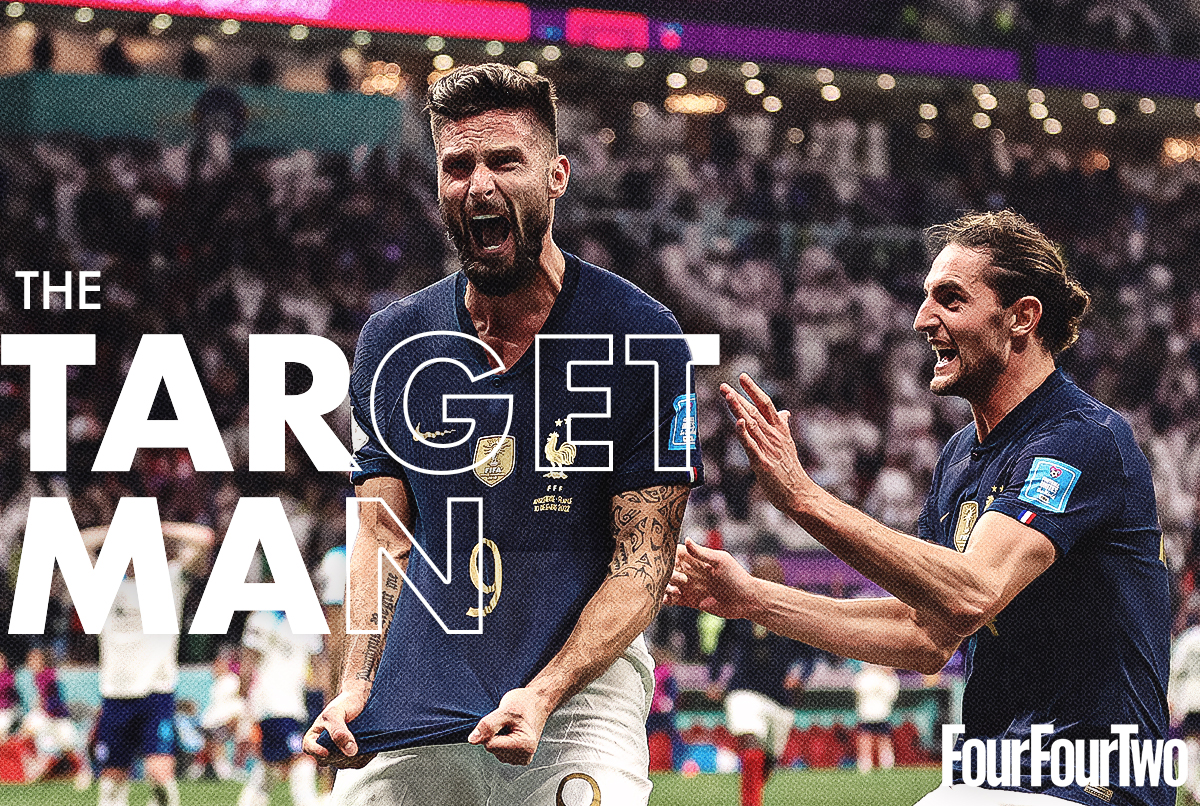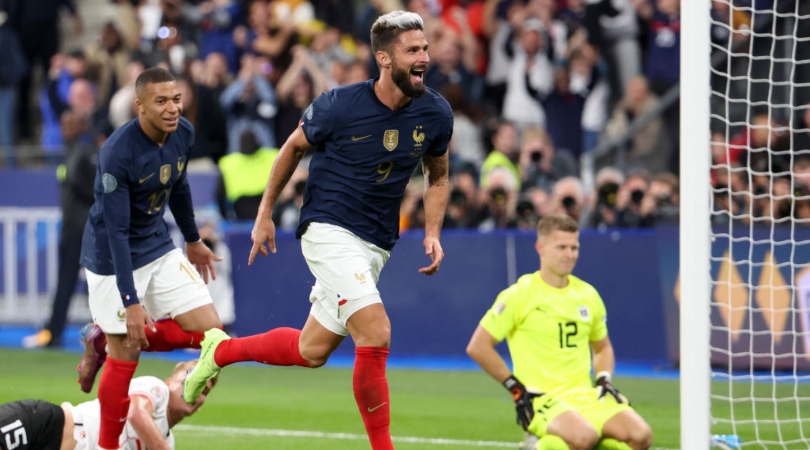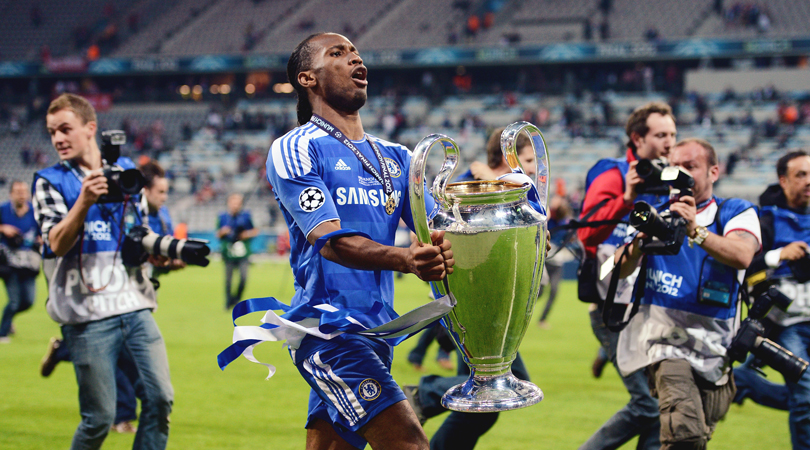
Ah, the target man. When is football at its most beautiful? For some, it is a gently weighted pass rounding off the ultimate team goal: think Carlos Alberto scoring Brazil’s fourth in the 1970 World Cup final against Italy.
For others, it might be an incredibly precise, perfectly executed volley, à la Zinedine Zidane for Real Madrid against Bayer Leverkusen in the 2002 Champions League. Then there of those of us who get the most joy in this sport from seeing a 6ft 7 striker get on the end of a floating cross, hung up to the back post.
Ideally, the striker, opposition goalkeeper and ball all crash into the net. Time for another of FourFourTwo's experts to deliver a tactical explainer on this football term.
What is a target man?
A target man doesn’t necessarily have to be huge, although it does help. As the name suggests they act as a target for their team.
Their aim is to win high, aerial balls, hold up the play to bring other teammates into the attack and generally unsettle the opposition's defence. It is a simple enough role to understand, but in the modern game, it is not an easy tactic to carry out effectively.
In the clip above, the red team play direct to the target man, who knocks the ball onto his fellow forward to chase.
Forwards in this mould have to be particularly strong, yet still be agile enough to cover a huge amount of turf. This is particularly true if you’re a target forward playing for a team that plays in a low block and aren’t particularly interested in the possession battle.
That means your team will probably spend the majority of the game defending, backs-against-the-wall style. In this scenario, the target forward will have to run the channels and utilise whatever space is available.
The target forward won’t look to make blindside runs, at least on a regular basis. Instead they will spend the majority a large proportion of the game with their back to goal, keeping praying defenders at bay.
Who are the best examples of target men?

A common misconception is that a target man can just be any physically imposing forward. Strictly speaking, that isn’t true. Standing at 6'3 and playing up front isn't enough.
Romelu Lukaku is one example. In the early part of his career at Anderlecht, Chelsea (first time) and West Brom, the Belgian built his game around winning aerial duels between the lines and encouraging a physical contest with the defender.
But Lukaku 2.0, on display during his time at Everton, Manchester United, Chelsea (second time) and Inter Milan, preferred running into the channels and poaching between defenders. He was still clearly a broad, physical forward, but didn’t build his game around that and wasn't a target man in the classic sense.
Not all target men are no.9s. Mario Mandzukic made a name for himself as a wide target man, playing on the wing but providing an aerial threat for his team-mates – and the role worked well because there was a bigger physical mismatch between the Croatian and his opposition full-backs than with centre-backs, who tend to be stronger aerially. Meanwhile, the advent of the ‘8.5’ – an evolution of the no.8 – has seen Kai Havertz and Cody Gakpo play in midfield, with both players aerial targets for team-mates. Launching medium-length passes to a physical midfielder means that there are more team-mates around to win knockdowns than would usually be from an isolated no.9 up top.
It’s a similar story for Erling Haaland – although as well all know there is very little the Norwegian can’t do. Better examples in recent years are Olivier Giroud (notably at the 2018 World Cup for France where he was hugely influential despite not scoring), Wout Weghorst, Darwin Nunez, Victor Osimhen and going back a little further, Didier Drogba.
Any budding target forward’s initiation should be to watch Drogba’s performance in both legs of Chelsea’s Champions League semi-final triumph over Barcelona in 2012. Simply put, it was one of the greatest displays by a target man in the modern era. Against a high press and Pep Guardiola's team asserting their superiority, the Ivorian's touch, physicality and intelligent hold-up play almost single-handedly disrupted the Barça backline, giving his team a foot in a very tough fight they eventually won.
Of course, the British Isles have also produced a number of great target men down the years like Alan Shearer, Les Ferdinand, John Toshack and going back further, John Charles. From the women's game, one of the best strikers in the sport's history, American Abby Wambach – ranked at no.16 in FourFourTwo's list of the greatest women's players ever – was a powerful target forward.
What are the pros and cons of using a target man?

Aside from the obvious benefits of box dominance, having a target man up front can be a pressure valve for any defending team. With just one long ball, you can transition from defence to attack – and when opponents know that big lad up top could win an aerial duel and help you progress up the pitch, they know they can't pen you in with no escape. This is something that a false nine just doesn't offer.
All teams need an outlet like this in their team, and while some managers like Eddie Howe and Jurgen Klopp would almost sacrifice losing that aerial battle to win the second ball with quick counter-pressing, a physical threat like a target man can help bring team-mates into the game. A focal point like this is a good reference point, too, for any playmaker or no.10 looking to attack.
But it's important to note why the big man up top went out of fashion towards the back end of the 2000s: teams stopped playing two players up top.
The idea was that in a little-and-large partnership, the target man would win balls for his strike partner to run onto. Naturally, this overloads central areas – making it a lot easier for defending teams to remain compact and defend that threat. Given their size and build, it's hard to find target men who offer elite movement in isolation and in the age of the lone no.9, it's hard to find a target man who doesn't need support alongside them.
Basically, if you’re playing with the big man ensure you aren’t one-dimensional. Unless that particular dimension happens to be a bulldozer like Drogba.







